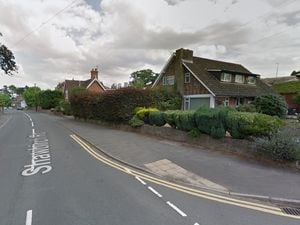Telford & Wrekin Council weighs in on row over 'overly dominant' garden fence
Telford & Wrekin Council has become embroiled in a row over a garden fence after refusing retrospective permission for its installation.

Applicant Mark Leighton submitted plans to Telford & Wrekin Council in June for the 1.8-metre wooden fence, which had been installed after the removal of the existing hedge at his property on Wellington Road in Admaston.
Mr Leighton said that the previous copper beech trees were taller than the installed fence. He added that the trees grew outwards, causing a visibility issue for the traffic on the busy junction outside of his house.
“They (the trees) were also diseased, with leaves black caused by pollution from the heavy traffic on Shawbirch Road,” said Mr Leighton in planning documents.
“The trees did not provide security for my elderly mother, who has breathing difficulties, or my dogs, and were no longer effective at creating a barrier to air pollution or sound pollution, caused by the traffic on Shawbirch Road, which has increased greatly since they were planted when the house was built.”
No objections to the application were lodged from the public or Wrockwardine Parish Council.
However, Telford & Wrekin Council’s planning department refused the application due to the ‘overall scale and design’ of the fencing.
They argued: “By virtue of the solid nature and height of the erected wooden fence, it has caused a detrimental harm to the character and appearance of the street scene.
“The retrospective development fails to respect or respond positively to the context of the application site or surrounding area and has resulted in an overly dominant, incongruous feature, which is highly prominent within the street scene and causes a detrimental impact on nearby local interest buildings.”
The applicant has appealed the decision and a government planning inspector will now decide the row.
Mr Leighton said that to counteract the council’s view, fast-growing laurel bushes and privets have been planted to the exterior of the fence ‘to soften’ its appearance.
“These will grow and cover the exterior of the fence, thus providing the softer green appearance as is desirable in the area,” Mr Leighton argues.
“The erection of the fence provides additional security as well as a barrier to traffic noise and pollution, and the planting of the bushes will improve this further.
“The bushes will be maintained close to the fence, thus preventing the previous issue of traffic visibility at the traffic junction. Moreover, the fence is made from timber which will mellow with age to be more in keeping with heritage properties close by, and is more sustainable than alternative materials.”
A planning inspector will now decide whether the garden fence can remain in place.





